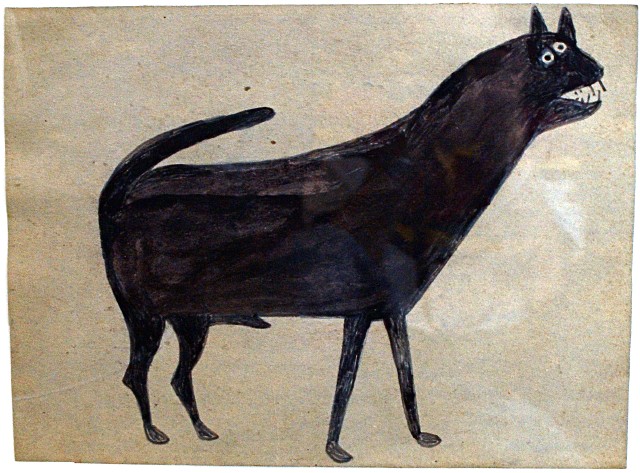William "Bill" Traylor (April 1, 1854 – October 23, 1949) was a self-taught artist born into slavery on a plantation belonging to George Hartwell Traylor near Benton, in Lowndes County, Alabama. After emancipation, his family continued to farm on the plantation until the 1930s. In 1939, at age eighty-five, he moved to Montgomery, where he slept in the back room of a funeral home and in a shoemaker's shop. During the day, he sat on the sidewalk and drew images of the people he saw on the street and remembered scenes from life on the farm, hanging his works on the fence behind him. That year, he met Charles Shannon, a painter, who, with his friends from the New South, brought Traylor art supplies and bought his drawings for nominal sums. Traylor is known for his intriguing use of pattern versus flat color, a sophisticated sense of space, and the simplified figures that give his work a startlingly modernist look. Using a stick for a straightedge, he created geometric silhouettes of human and animal figures which he then filled in with pencil, colored pencil, or poster paints. Much speculation surrounds the identification of mysteriously shaped objects, usually referred to as "constructions," and the complex scenes he called "Exciting Events," which depict groups of people energetically engaged in often puzzling activities.


No comments:
Post a Comment